
The 20 Best Things To Do In Naples, Italy in 2021 Parker Villas
Castel Nuovo History. The Castel Nuovo history starts from King Charles I of Anjou, who transferred the seat of government for the province of Sicily from Palermo to Naples, ordered the construction of the castle.The builder Pierre de Chaulnes was given the task of building this significant structure, and under his direction, work on it began.

Castel Nuovo, Naples Castel, Places to visit, Travel
Castel Nuovo was a royal seat for kings of Naples, Aragon and Spain until 1815. In the 14th century this place was hosting numerous remarkable personalities, such as Petrarch, Giotto and many others. Now, I think, you can also visit it for some performances as we saw a stage being built in the middle of the courtyard.

Castel Nuovo. Naples. Italy Editorial Stock Photo Image of defensive
Castel Nuovo , often called Maschio Angioino , is a medieval castle located in front of Piazza Municipio and the city hall in central Naples, Campania, Italy. Its scenic location and imposing size makes the castle, first erected in 1279, one of the main architectural landmarks of the city. It was a royal seat for kings of Naples, Aragon and Spain until 1815.

Triumphal arch of the Castel Nuovo, Naples — Stock Photo © scaliger
Castel Nuovo (Maschio Angioino) Tours and Tickets. 1,079 reviews. Castel Nuovo, known locally as Maschio Angioino, has the imposing stone walls, soaring turrets, and crenellated ramparts of a storybook medieval castle. Built as the new royal residence between 1279 and 1282 by Charles I of Anjou, it is one of Naples' most striking buildings and.
Castel Nuovo, Naples, Italy Medieval Fortress facing the deep blue
The Castel Nuovo. The Castel Nuovo, so called to distinguish it from the older Castel dell'Ovo, was founded in 1279 by Charles I of Naples (Charles of Anjou). One of many Neapolitan landmarks to bear interchangeable names, it is known locally as the Maschio Angioino, in reference to Charles's Angevin origins and from the southern Italian convention that a show of power is necessarily male.
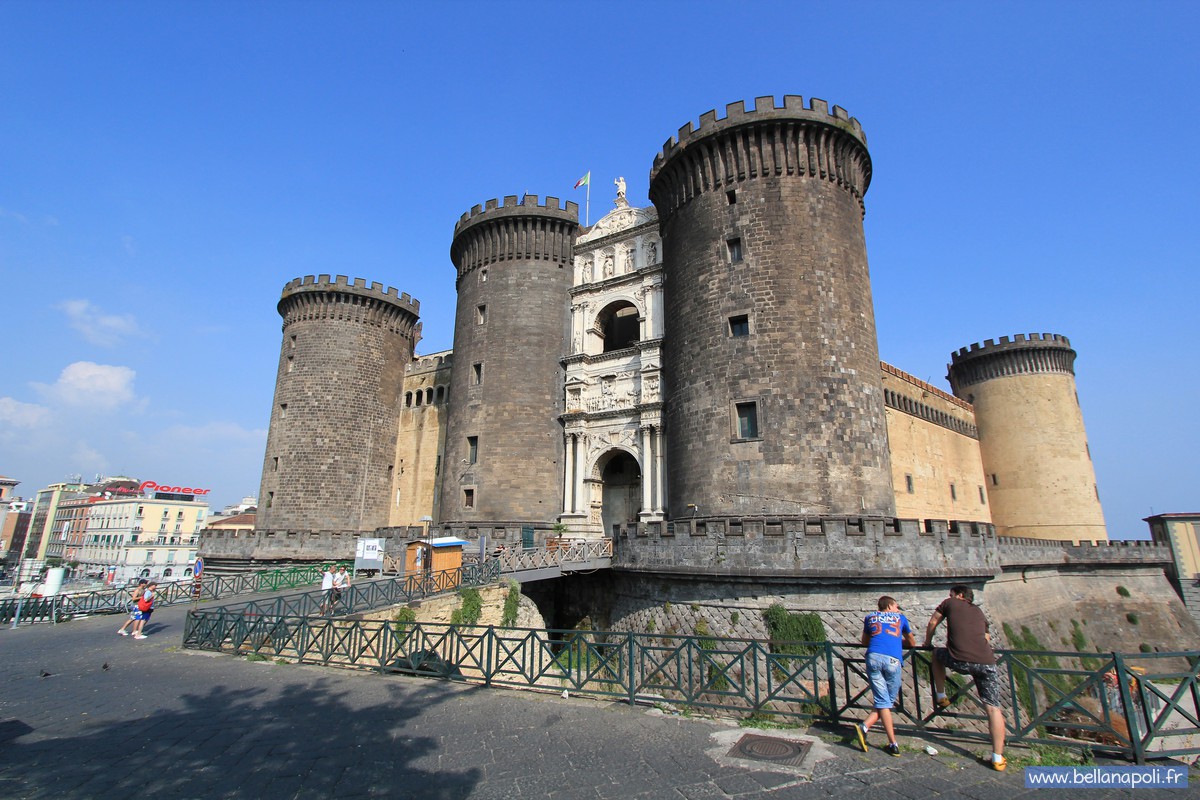
Le Castel Nuovo Bella Napoli Découverte de Naples, son histoire, sa
Construction and Early Years (13th-15th centuries) The magnificent Castel Nuovo came into being by the initiative of Charles I of Anjou, who became the ruler of Sicily in 1266 after defeating the Staufer Dynasty. The castle remained uninhabited until 1285 when Charles I passed away. King Charles II of Naples succeeded Charles I and moved into.
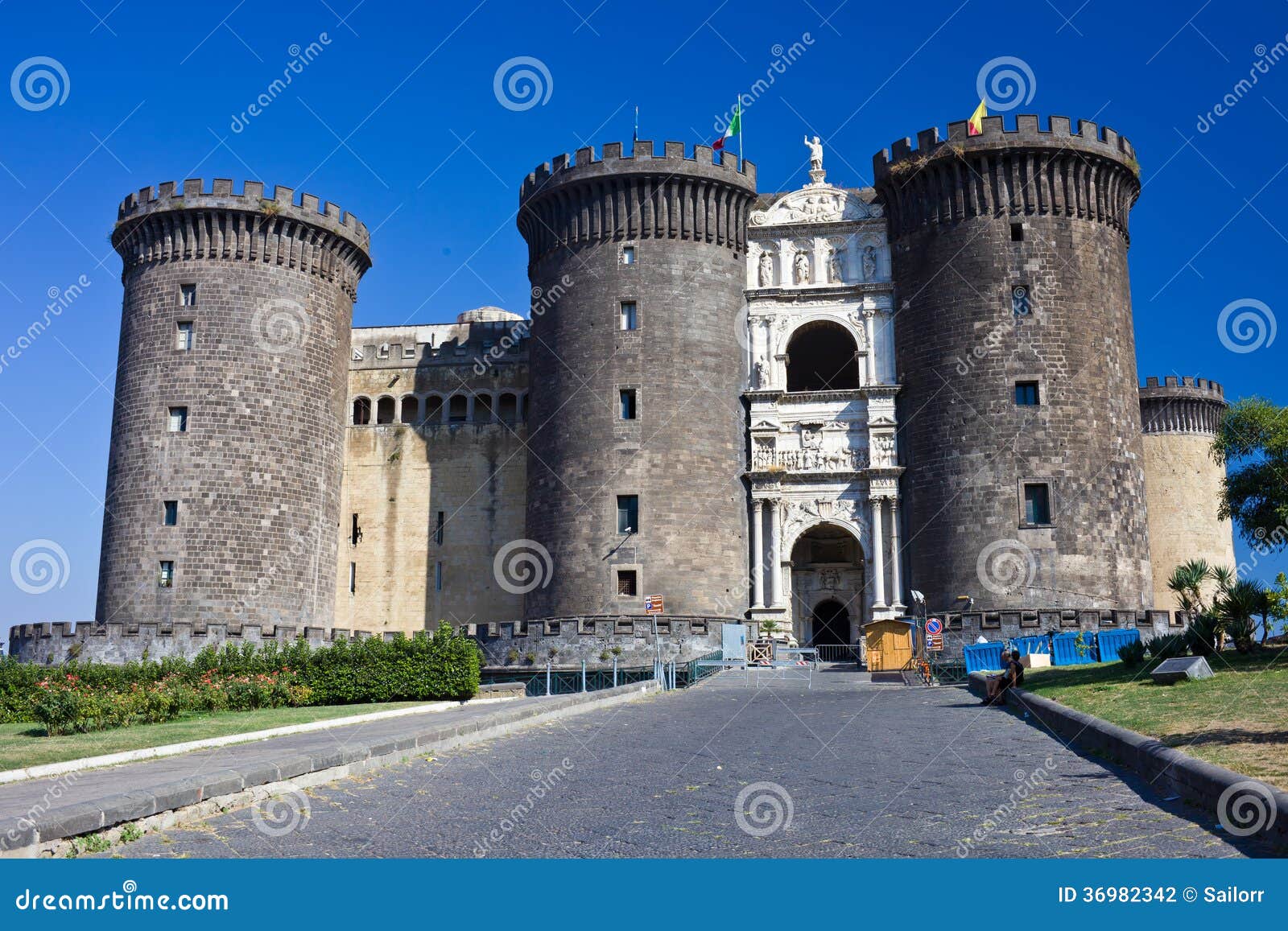
Castel Nuovo in Naples stock photo. Image of tower, arch 36982342
From Castel Nuovo to Maschio Angioino. Castel Nuovo, better known by the name of Maschio Angioino, is a medieval and renaissance castle built on the wishes of Charles I of Anjou in 1266, after defeating the Swabians, having ascended the throne of Sicily and having moved the capital from Palermo to Naples.. From the thirteenth century the imposing Maschio Angioino, with its large five.

The Best Hotels Closest to Castel Nuovo in Naples for 2021 FREE
Visual tour of The Castel Nuovo (or Maschio Angioino) is one of the most famous and important symbols of the city of Naples. It majestic architecture, facing.
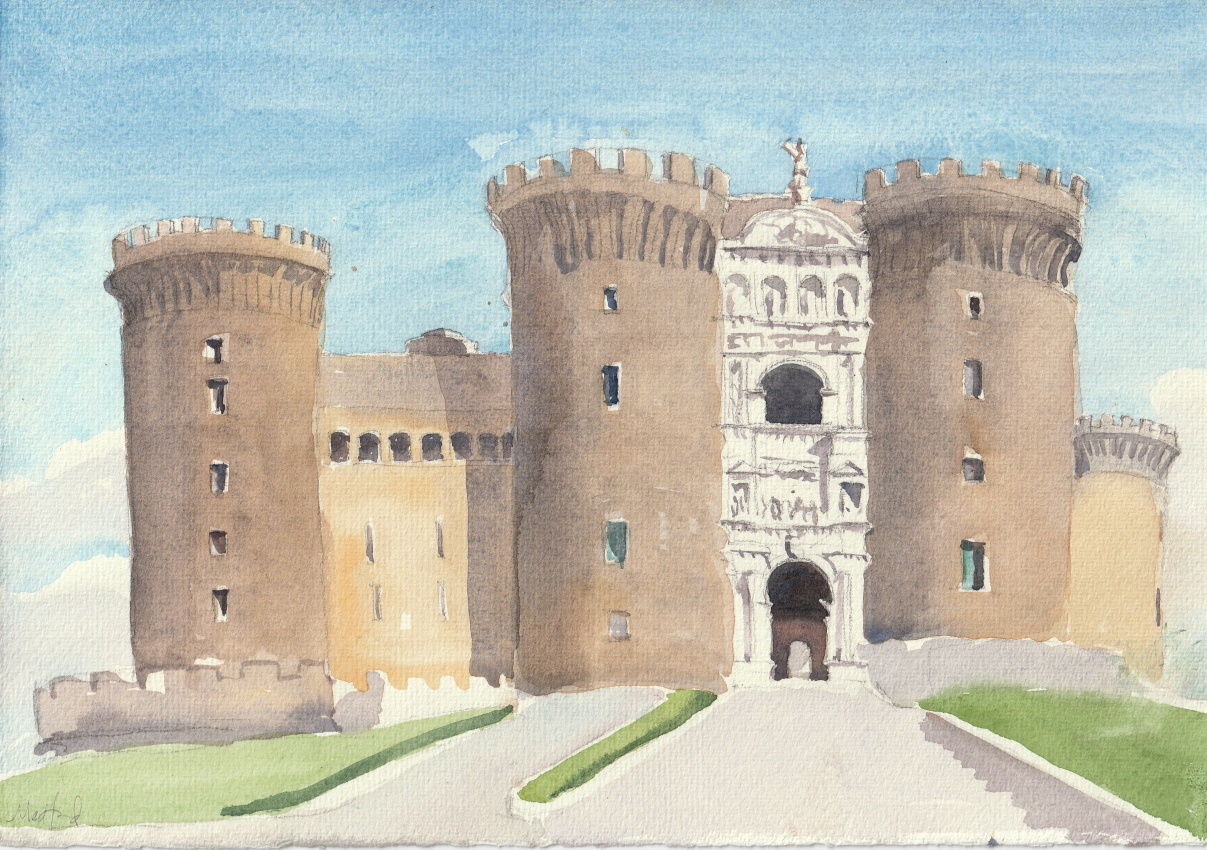
Castel Nuovo, Naples Kelly Medford
Named Castel Nuovo (New Castle) to distinguish it from the city's other fortresses when it was built in the 13th century by King Charles I of Anjou, this imposing castle is more commonly known by locals as Maschio Angioino, or the Angevin Keep.. After French rule ended and Naples was conquered by the Spanish Empire in the mid 15th century, Castel Nuovo was completely rebuilt by Alfonso V of.

Castel Nuovo Naples a photo on Flickriver
The Castel Nuovo (or Maschio Angioino) is one of the most famous and important symbols of the city of Naples.It majestic architecture, facing the deep blue Mediterranean Sea, has been part of the history of Naples over the last eight centuries, silently witnessing the constant succession of men who have made the history of the city great.
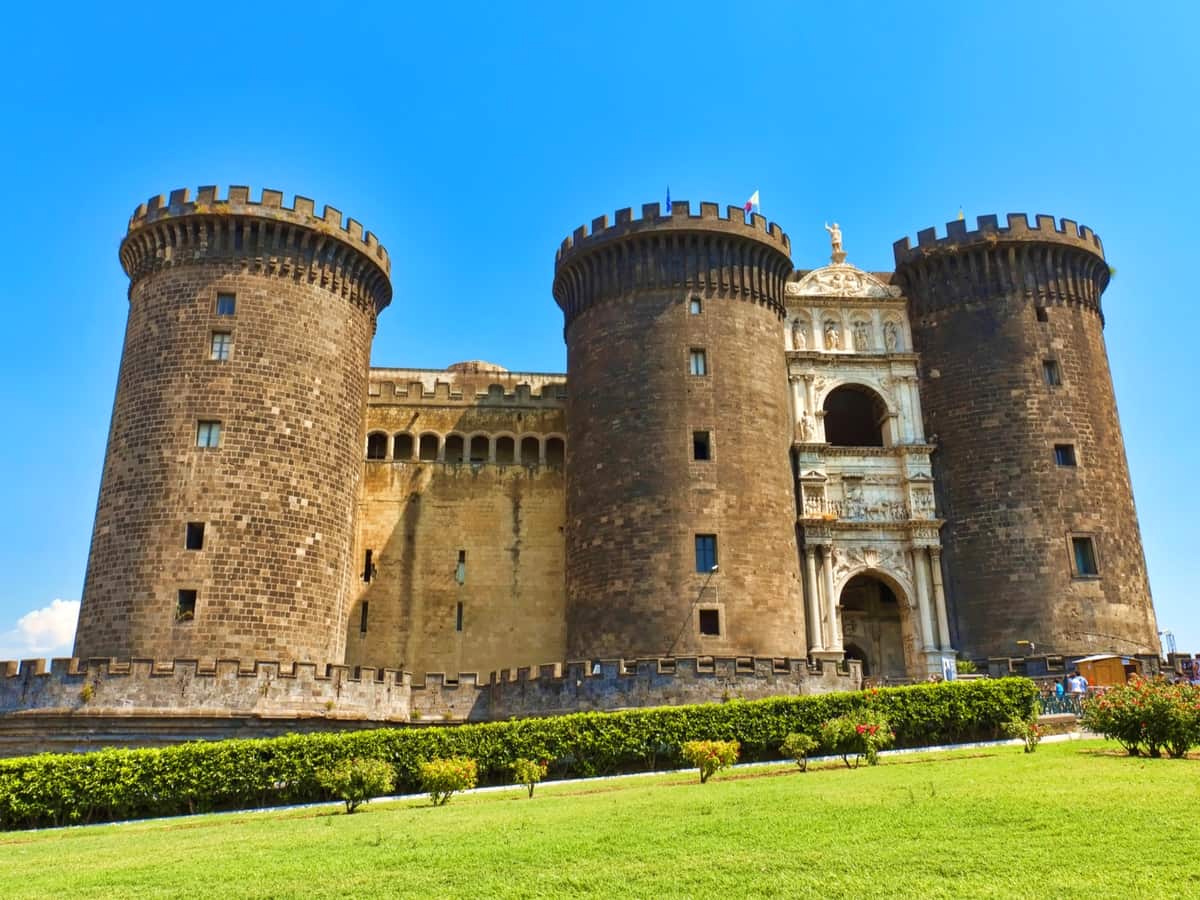
Best of Naples Tour & Local Coffee Tasting City Wonders
Dec 2023 • Family. I was born in Naples and I visited Castel Nuovo (Maschio Angioino) multiple times. They now offer a tour for €10 which includes a guided tour. In this tour we saw: the castle museum, the Roman ruins below the castle, the secret passageway, the throne room, the terrace at the top of the castle, the prisons.

Castel Nuovo In Naples Italy Stock Photo Download Image Now iStock
Castel Nuovo (Italian: [kaˈstɛl ˈnwɔːvo]; "New Castle"), often called Maschio Angioino (Italian: [ˈmaskjo andʒoˈiːno]; "Angevin Keep"), is a medieval castle located in front of Piazza Municipio and the city hall (Palazzo San Giacomo) in central Naples, Campania, Italy.Its scenic location and imposing size makes the castle, first erected in 1279, one of the main architectural landmarks.

Castel Nuovo, Naples, Italy One of the main architectural landmarks of
Castel Nuovo (or New Castle), which locals call the Maschio Angioino, is a medieval castle located in Naples, Italy.Built in 1279, it was the royal residence of the Kings of Naples until the 16th century. Today the gothic castle, which dominates the space between the waterfront and the central Piazza Municipio, is a museum and one of the most popular tourist attractions in the city of Naples.

Castel Nuovo, Naples, Italy Naples italy, Castel, Italy travel
Castel Nuovo. The building of the Castel Nuovo, also called Maschio Angioino, began in 1279 under the reign of Charles I of Anjou, on the basis of a plan by the French architect Pierre de Chaule. The strategic position of the new castle gave it the characteristics not only of a royal residence, but also those of a fortress.

The Castel Nuovo, Naples Architecture Photos on Creative Market
Castel Nuovo

Castel Nuovo, Naples 2016, Campania, Italy photography by cityhopper2
The tour of the Castel Nuovo begins in the 14th-century Palatine Chapel (or Chapel of Santa Barbara), which opens onto the 15th-century courtyard. , the work of Andrea dell'Aquila, replaced the Angevin portal in the 15th century, just as the rose window above, designed by the Catalan Matteo Forcimanya in 1470, replaced the 14th-century one.